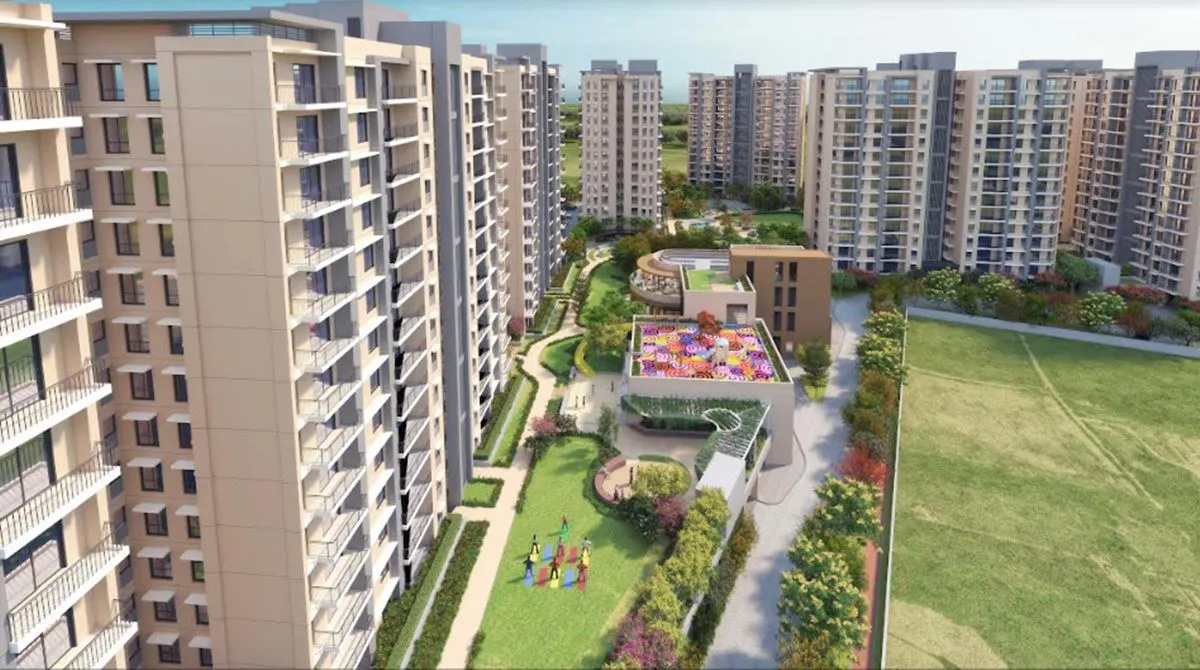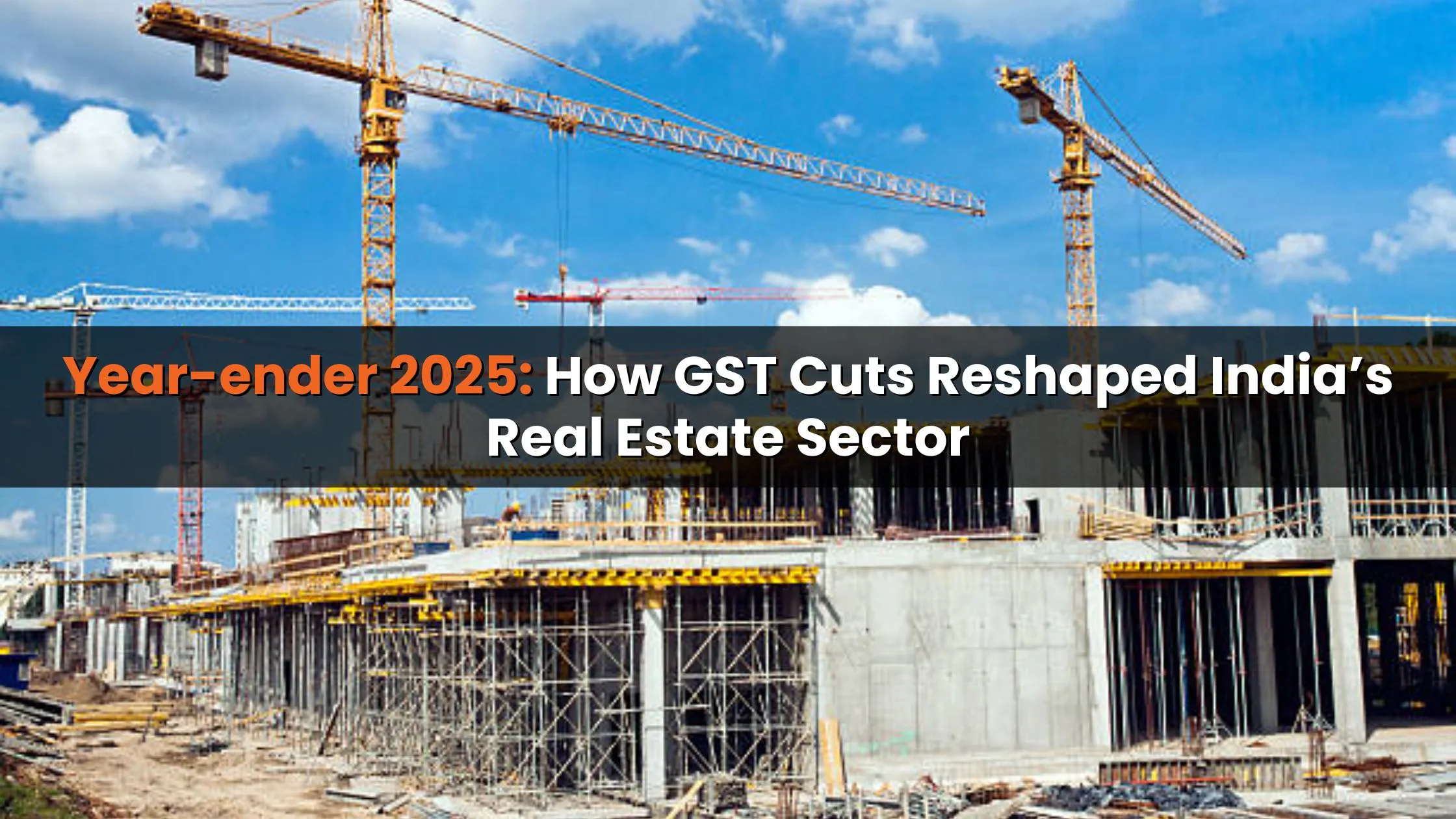Table of Content
- Big Price Jumps in Cities Like Jaipur and Guntur
- Growth Continues in the South: Guntur Leads
- Western India Sees Steady Growth
- Eastern India’s Bhubaneswar and Raipur See Price Hikes
- Goa: The Premium Destination
- Why Are Prices Rising?
- A New Wave of Development
- What Does This Mean for Buyers and Investors?
Recently, there has been a huge increase in the property prices in Tier-2 Indian Cities. A report from PropEquity, a prominent real estate analytics company, highlights that the cost of a new home in the top 30 tier-2 Indian cities has increased by as much as 65%. This increase in prices can be said to have come as a mixed bag where some cities have witnessed swift increases while some are struggling with falling prices.
Let’s delve into what is going on in these cities and what makes them such a point of focus.
Big Price Jumps in Cities Like Jaipur and Guntur
When we look at North India, Jaipur is the one which has seen the highest growth in property investment. The price of newly constructed residential buildings in Jaipur soared up by a whopping 65 %, growing from ₹4,240 per square foot to ₹6,979 per square foot. What this means is that the home buyers in say a year or 2 from now would have to pay exorbitant amounts to acquire a new home.
Other cities in North India also saw price increases, but not as dramatic as Jaipur. Indore, for example, saw a 20% increase, while Dehradun experienced a more modest rise of 14%. However, not all cities are doing well. Sonepat, Mohali, and Bhopal all saw declines in property prices, with Sonepat witnessing the biggest drop at 26%.
Also Read: Year-End 2024: Real Estate Sees Record $8.8B in Institutional Investments
Growth Continues in the South: Guntur Leads
In South India, Guntur is at the forefront with a 51% jump in property prices. New homes in Guntur now cost an average of ₹5,169 per square foot. Mangalore and Visakhapatnam also showed strong growth, with prices going up by 41% and 29% . However, not all southern cities are doing well. Mysore and Trivandrum both saw price drops, with Mysore's prices falling 14% and Trivandrum's dropping 4%.
Western India Sees Steady Growth
The real estate market in Western India is also on an upswing. Gandhi Nagar, a city on the rise in Gujarat, experienced a 19% increase in property prices pushing the average to ₹4,844 per square foot. Surat and Nagpur also saw consistent growth, with prices climbing by 14% and 12% .
Eastern India’s Bhubaneswar and Raipur See Price Hikes
In the eastern part of India, Bhubaneswar has seen property prices go up by 15%, which means the average price is now ₹7,731 for each square foot. Raipur's prices also went up climbing 14% to reach ₹3,810 per square foot. Among the cities mentioned, Raipur is still one of the cheaper options, with prices staying under ₹4,000 for a square foot.
Goa: The Premium Destination
Goa, known for its beaches and vibrant lifestyle, is the only city among the 30 Tier 2 cities to cross the ₹10,000 per square foot mark. The real estate market in Goa is booming, driven by the demand for high-end, luxury homes. This is a stark contrast to other cities like Vijayawada, Gandhi Nagar, Surat, and Vadodara, where property prices remain below ₹5,000 per square foot.
|
Location |
(Jan-Dec) 2023 |
(Jan-Oct) 2024 |
% Change |
|
Jaipur |
4240 |
6979 |
65% |
|
Agra |
6989 |
11111 |
59% |
|
Chandigarh |
7237 |
9725 |
34% |
|
Bhiwadi |
4624 |
5774 |
25% |
|
Indore |
5187 |
6238 |
20% |
|
Dehradun |
7994 |
9139 |
14% |
|
Ludhiana |
6564 |
7301 |
11% |
|
Lucknow |
6249 |
6336 |
1% |
|
Panipat |
8777 |
- |
0% |
|
Bhopal |
5367 |
5112 |
- 5% |
|
Mohali |
7412 |
6843 |
- 8% |
|
Sonepat |
7036 |
5237 |
- 25% |
|
Guntur |
3429 |
5169 |
51% |
|
Manglore |
5730 |
8030 |
41% |
|
Vishakapatnam |
5821 |
7519 |
29% |
|
Vijaywada |
3932 |
4743 |
21% |
|
Coimbatore |
6067 |
6741 |
11% |
|
Goa |
10027 |
10637 |
6% |
|
Kochi |
7166 |
7344 |
2% |
|
Trivandram |
6580 |
6307 |
- 4% |
|
Mysore |
6186 |
5319 |
- 14% |
Also Read: Govt's Zero-Collateral Housing Loan: A Breakthrough for Low & Mid-Income Families
Why Are Prices Rising?
There are a few key reasons why these cities are seeing such high increases in property prices. One major factor is the availability of cheaper land. In many Tier 2 cities, land is much more affordable than in the crowded Tier 1 cities like Delhi and Mumbai. As developers buy land at lower prices, they can build new homes and offer them at higher prices, especially as these cities are becoming more attractive to people looking for affordable housing outside the big cities.
Another big factor is the improvement in infrastructure. As roads, transportation, and other facilities improve, more people want to live in these cities. The growing economy is also contributing, as more industries are setting up in these areas, creating jobs and attracting people looking for work.
A New Wave of Development
Samir Jasuja, who started PropEquity, points out that people want homes in Tier 2 cities. It's not just locals buying - investors and builders from bigger places are interested too. These cities might grow into key spots for business and work. This has led builders to focus on high-end homes, which drives up prices.
As these cities get better roads and more people move in, houses will keep selling well. Those who know the market think builders will keep making both cheap and fancy homes. This way, they can sell to families without much money and to folks who want nicer places to live.
What Does This Mean for Buyers and Investors?
For homebuyers and investors, the real estate boom in Tier 2 cities represents both opportunities and challenges. For homebuyers, this could be a good time to buy property in these cities, as many of them are still more affordable than the big cities. However, with prices rising, it’s important to act quickly before prices increase further.
Investors, on the other hand, could see great returns in the coming years. As more people move to these cities and demand for housing increases, property values are likely to continue to rise. Those who invest now may see their investments grow significantly.
The increase in property values in India's Tier 2 cities shows these areas are becoming more important in the country's real estate market. Better infrastructure, cheaper land, and a thriving economy have made places like Jaipur, Guntur, and Goa hot spots for home buyers and investors alike. As Tier 1 cities get too crowded, more people are moving to these Tier 2 cities. These places offer a modern, budget-friendly, and appealing living option for the younger crowd looking to buy homes. If you want to purchase a house or put money into real estate, keep an eye on these cities in the years to come.
Also Read: Gurugram Overtakes Mumbai as India's Ultra-Luxury Hub







Ans 1. The boom is driven by cheaper land, better infrastructure, and economic growth, making these cities more attractive for residents and investors.
Ans 2. Property prices have surged, with cities like Jaipur and Guntur seeing increases of up to 65%. Some cities have seen price declines, but many are still growing.
Ans 3. Jaipur, Guntur, and Goa have seen the highest price hikes, with Jaipur leading at a 65% increase.
Ans 4. Investors can buy properties at lower prices than in Tier 1 cities, with expectations of high returns as demand and development increase.
Ans 5. Yes, Tier 2 cities are generally more affordable, offering budget-friendly options with improving infrastructure and job opportunities.
Ans 6. Better infrastructure, such as improved transportation, is boosting property demand by making these cities more accessible and attractive.
Ans 7. The boom could lead to more balanced growth, alleviating congestion in Tier 1 cities while fostering new economic hubs in Tier 2 cities.
Ans 8. Yes, with increasing demand, economic growth, and ongoing infrastructure improvements, property prices in Tier 2 cities are expected to continue rising in the near future.